Opinion & Analysis
The Wedge Guy: Spin 2: An examination of impact
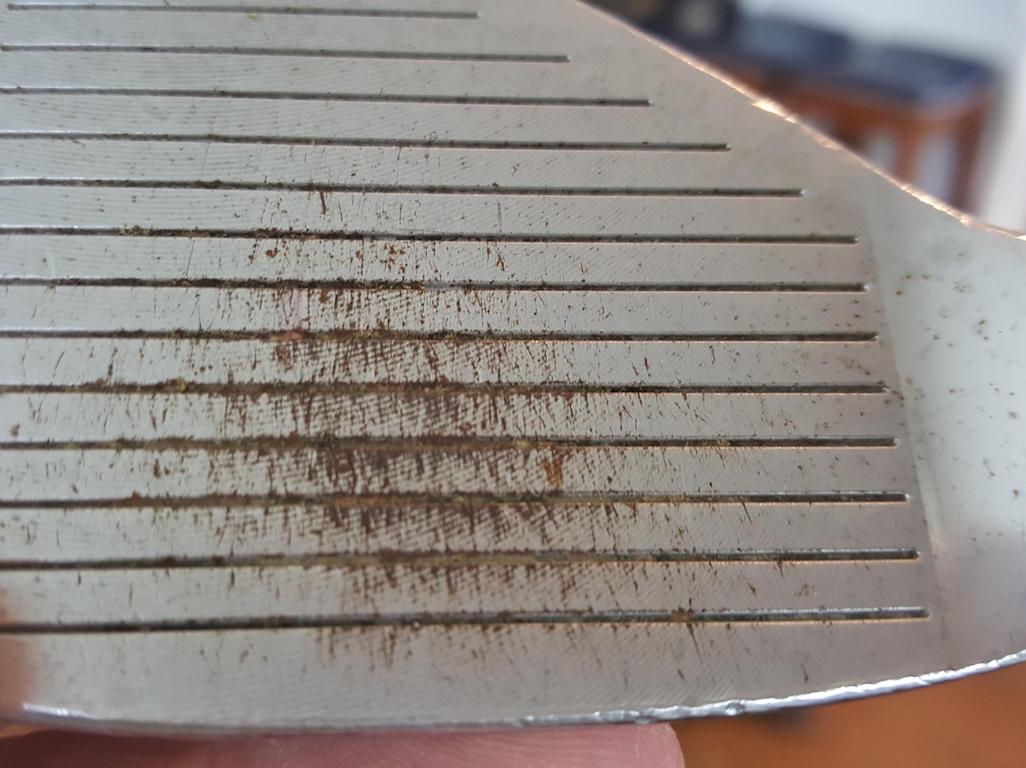
Last week, I gave an overview of all the factors that I believe affect spin and promised to dive deeper into the dynamics of impact this week.
But first, thanks to all of you who chimed in with your comments. Those keep me going, whether you totally agree with me (or completely disagree) I enjoy reading what you all have to say. I will be the first to admit that the science of golf is unsettled…we continually learn more and more about the dynamics of swinging a golf club and striking a ball. And that’s a good thing.
In today’s post, I want to share what I believe to be true about impact – lessons learned from observing thousands of golfers of all skill levels, interacting and analyzing over 50,000 wedge-fitting profiles from our online engagements, and analyzing data from Iron Byron testing of wedges of all lofts, makes and models over the years.
So here goes.
From all that input I’ve gained over the years, I believe that some golfers are just always going to spin the ball better than others. I also believe that anyone can learn to spin the ball better, if they are willing to invest in instruction and practice, but that is what it takes. Ever since the USGA and R&A changed the rules on groove geometry in 2010, and eliminated those sharp-edged square grooves, spin just isn’t “for sale” anymore.
So, let’s first dive into the dynamics of the wedges you play. But we’re not going to address clubhead speed, as I believe we all agree that faster speed results in more spin. While that doesn’t mean you should try to hit your wedges harder, it is a piece of information you should know. What you can do with that is try to leave yourself lay-up shots that give you more full-swing wedges into the green than those dreaded ‘half-wedges.’
There is no question that very new wedges, with fresh grooves and no face wear yet, will help you spin the ball better than an old worn out wedge. But is it realistic to think that all of us can just run out and get new wedges every 40-50 rounds, as one major wedge manufacturer suggests? Probably not.
The next best thing is to keep your wedge face and grooves as clean as possible for each shot. After you take your practice swings on that wedge shot, give your club a good wiping down with a towel to get it as clean as possible – that will definitely help.
Likewise, I have learned that softer shafts will help you spin the ball better, as will graphite over steel in my opinion and observation.
One of the most critical factors of wedge spin as a result of impact is the exact point on the face where impact is made. We’ve all heard “thin to win,” and that is truer with wedges than any other club. Generally speaking, the lower on the face you make contact, the lower launch angle you will get and the more spin the ball will take on.
In the many Iron Byron tests of wedges of all makes and models that I have analyzed, I’ve learned that spin will dramatically drop off as impact is moved higher on the head and toward the toe as well. In a recent test, we saw top-brand wedges deliver spin variances as much as 35-45 percent from impacts as little as 3/8” from center. When we measured the range from maximum spin (low face) to minimum spin (high face and toe), most wedges would see variances of as much as 55 percent!
I will tell you that tour players and top-level amateurs generally strike their wedge shots lower on the face than most recreational players. So, if you want to learn to spin your wedges better, practice making impact lower on the face. Impact tapes are a good way to see your own results and the effect of your practice. The two photos below are from a well-known tour player’s wedge (above) and that of a low-single-digit player’s wedge (below). That lower impact pattern of just 2-3 grooves gives the tour player a lower launch angle, more distance and much more spin on a consistent basis.
The other element of impact that you can learn and improve on is your angle of approach to the ball, and the quality of your impact. To get maximum spin from your skill set and strength profile, you must make absolutely sure you contact the ball before the turf, and that your clubhead is moving slightly downward at impact. You don’t need to dig up “beaver pelts,” but you do need to make clean contact with the ball first. A very good amateur golfer I knew well would never take much divot at all, he just nipped the ball clean and “shaved” the grass with each iron shot. But darn, he spun the ball and controlled his trajectories as well as anyone I ever saw that didn’t do this for a living.
So, I hope this helps those of you who would like to learn to spin the ball better with your wedges. To recap:
- Make sure your grooves and face are clean before the shot that counts.
- Learn to make contact lower on the face consistently.
- Learn how to make a clean descending path through impact (A tip I can offer that works for most golfers is to focus your eyes on the forward edge of the ball for all wedge shots – the side toward the target. It really does work)
I hope you all enjoyed this two-part series on spin. I would also appreciate you sending me an email with ideas of things you would like me to address in future articles. My knowledge, insights, and opinions are yours for the asking. Just send that email to [email protected].
- LIKE182
- LEGIT12
- WOW3
- LOL2
- IDHT2
- FLOP1
- OB1
- SHANK10
Opinion & Analysis
The Wedge Guy: What really makes a wedge work? Part 1

Of all the clubs in our bags, wedges are almost always the simplest in construction and, therefore, the easiest to analyze what might make one work differently from another if you know what to look for.
Wedges are a lot less mysterious than drivers, of course, as the major brands are working with a lot of “pixie dust” inside these modern marvels. That’s carrying over more to irons now, with so many new models featuring internal multi-material technologies, and almost all of them having a “badge” or insert in the back to allow more complex graphics while hiding the actual distribution of mass.
But when it comes to wedges, most on the market today are still single pieces of molded steel, either cast or forged into that shape. So, if you look closely at where the mass is distributed, it’s pretty clear how that wedge is going to perform.
To start, because of their wider soles, the majority of the mass of almost any wedge is along the bottom third of the clubhead. So, the best wedge shots are always those hit between the 2nd and 5th grooves so that more mass is directly behind that impact. Elite tour professionals practice incessantly to learn to do that consistently, wearing out a spot about the size of a penny right there. If impact moves higher than that, the face is dramatically thinner, so smash factor is compromised significantly, which reduces the overall distance the ball will fly.
Every one of us, tour players included, knows that maddening shot that we feel a bit high on the face and it doesn’t go anywhere, it’s not your fault.
If your wedges show a wear pattern the size of a silver dollar, and centered above the 3rd or 4th groove, you are not getting anywhere near the same performance from shot to shot. Robot testing proves impact even two to three grooves higher in the face can cause distance loss of up to 35 to 55 feet with modern ‘tour design’ wedges.
In addition, as impact moves above the center of mass, the golf club principle of gear effect causes the ball to fly higher with less spin. Think of modern drivers for a minute. The “holy grail” of driving is high launch and low spin, and the driver engineers are pulling out all stops to get the mass as low in the clubhead as possible to optimize this combination.
Where is all the mass in your wedges? Low. So, disregarding the higher lofts, wedges “want” to launch the ball high with low spin – exactly the opposite of what good wedge play requires penetrating ball flight with high spin.
While almost all major brand wedges have begun putting a tiny bit more thickness in the top portion of the clubhead, conventional and modern ‘tour design’ wedges perform pretty much like they always have. Elite players learn to hit those crisp, spinny penetrating wedge shots by spending lots of practice time learning to consistently make contact low in the face.
So, what about grooves and face texture?
Grooves on any club can only do so much, and no one has any material advantage here. The USGA tightly defines what we manufacturers can do with grooves and face texture, and modern manufacturing techniques allow all of us to push those limits ever closer. And we all do. End of story.
Then there’s the topic of bounce and grinds, the most complex and confusing part of the wedge formula. Many top brands offer a complex array of sole configurations, all of them admittedly specialized to a particular kind of lie or turf conditions, and/or a particular divot pattern.
But if you don’t play the same turf all the time, and make the same size divot on every swing, how would you ever figure this out?
The only way is to take any wedge you are considering and play it a few rounds, hitting all the shots you face and observing the results. There’s simply no other way.
So, hopefully this will inspire a lively conversation in our comments section, and I’ll chime in to answer any questions you might have.
And next week, I’ll dive into the rest of the wedge formula. Yes, shafts, grips and specifications are essential, too.
- LIKE23
- LEGIT7
- WOW1
- LOL1
- IDHT2
- FLOP2
- OB1
- SHANK2
Golf's Perfect Imperfections
Golf’s Perfect Imperfections: Amazing Session with Performance Coach Savannah Meyer-Clement

In this week’s episode, we spent some time with performance coach Savannah Meyer-Clement who provides many useful insights that you’ll be able to implement on the golf course.
- LIKE0
- LEGIT0
- WOW0
- LOL0
- IDHT0
- FLOP0
- OB0
- SHANK0
19th Hole
Vincenzi’s 2024 RBC Heritage betting preview: Patrick Cantlay ready to get back inside winner’s circle

Just a two-hour drive from Augusta National, the PGA TOUR heads to Harbour Town Golf Links in Hilton Head Island, S.C. Hilton Head Island is a golfer’s paradise and Harbour Town is one of the most beautiful and scenic courses on the PGA TOUR.
Harbour Town Golf Links is a par-71 that measures 7,121 yards and features Bermuda grass greens. A Pete Dye design, the course is heavily tree lined and features small greens and many dog legs, protecting it from “bomb-and-gauge” type golfers.
The field is loaded this week with 69 golfers with no cut. Last year was quite possibly the best field in RBC Heritage history and the event this week is yet another designated event, meaning there is a $20 million prize pool.
Most of the big names on the PGA Tour will be in attendance this week with the exceptions of Hideki Matsuyama and Viktor Hovland. Additionally, Webb Simpson, Shane Lowry, Gary Woodland and Kevin Kisner have been granted sponsors exemptions.
Past Winners at Harbour Town
- 2023: Matt Fitzpatrick (-17)
- 2022: Jordan Spieth (-13)
- 2021: Stewart Cink (-19)
- 2020: Webb Simpson (-22)
- 2019: CT Pan (-12)
- 2018: Sotoshi Kodaira (-12)
- 2017: Wesley Bryan (-13)
- 2016: Branden Grace (-9)
- 2015: Jim Furyk (-18)
In this article and going forward, I’ll be using the Rabbit Hole by Betsperts Golf data engine to develop my custom model. If you want to build your own model or check out all of the detailed stats, you can sign up using promo code: MATTVIN for 25% off any subscription package (yearly is best value).
Key Stats For Harbour Town
Let’s take a look at key metrics for Harbour Town Golf Links to determine which golfers boast top marks in each category over their past 24 rounds.
Strokes Gained: Approach
Strokes Gained: Approach is exceedingly important this week. The greens at Harbour Town are about half the size of PGA TOUR average and feature the second-smallest greens on the tour. Typical of a Pete Dye design, golfers will pay the price for missed greens.
Total SG: Approach Over Past 24 Rounds
- Scottie Scheffler (+1.27)
- Tom Hoge (+1.27)
- Corey Conners (+1.16)
- Austin Eckroat (+0.95)
- Cameron Young (+0.93)
Good Drive %
The fairways at Harbour Town are tree lined and feature many dog legs. Bombers tend to struggle at the course because it forces layups and doesn’t allow long drivers to overpower it. Accuracy is far more important than power.
Good Drive % Over Past 24 Rounds
- Brice Garnett (88.8%)
- Shane Lowry (+87.2%)
- Akshay Bhatia (+86.0%)
- Si Woo Kim (+85.8%)
- Sepp Straka (+85.1%)
Strokes Gained: Total at Pete Dye Designs
Pete Dye specialists tend to play very well at Harbour Town. Si Woo Kim, Matt Kuchar, Jim Furyk and Webb Simpson are all Pete Dye specialists who have had great success here. It is likely we see some more specialists near the top of the leaderboard this week.
SG: TOT Pete Dye per round over past 36 rounds:
- Xander Schauffele (+2.27)
- Scottie Scheffler (+2.24)
- Ludvig Aberg (+2.11)
- Brian Harman (+1.89)
- Sungjae Im (+1.58)
4. Strokes Gained: Short Game (Bermuda)
Strokes Gained: Short Game factors in both around the green and putting. With many green-side bunkers and tricky green complexes, both statistics will be important. Past winners — such as Jim Furyk, Wes Bryan and Webb Simpson — highlight how crucial the short game skill set is around Harbour Town.
SG: SG Over Past 24 Rounds
- Jordan Spieth (+1.11)
- Taylor Moore (+1.02)
- Wyndham Clark (+0.98)
- Mackenzie Hughes (+0.86)
- Andrew Putnam (+0.83)
5. Greens in Regulation %
The recipe for success at Harbour Town Golf Links is hitting fairways and greens. Missing either will prove to be consequential — golfers must be in total control of the ball to win.
Greens in Regulation % over past 24 rounds:
- Brice Garnett (+75.0%)
- Scottie Scheffler (+69.9%)
- Corey Conners (+69.0%)
- Shane Lowry (+68.3%)
- Patrick Rodgers (+67.6%)
6. Course History
Harbour Town is a course where players who have strong past results at the course always tend to pop up.
Course History over past 24 rounds:
- Patrick Cantlay (+2.34)
- Cam Davis (+2.05)
- J.T. Poston (+1.69)
- Justin Rose (+1.68)
- Tommy Fleetwood (+1.59)
The RBC Heritage Model Rankings
Below, I’ve compiled overall model rankings using a combination of the five key statistical categories previously discussed — SG: Approach (24%), Good Drives (20%), SG: SG (14%), SG: Pete Dye (14%), GIR (14%), and Course History (14%)
- Shane Lowry
- Russell Henley
- Scottie Scheffler
- Xander Schauffele
- Corey Conners
- Wyndham Clark
- Christiaan Bezuidenhout
- Matt Fitzpatrick
- Cameron Young
- Ludvig Aberg
2024 RBC Heritage Picks
Patrick Cantlay +2000 (FanDuel)
With the exception of Scottie Scheffler, the PGA Tour has yet to have any of their star players show peak form during the 2024 season. Last week, Patrick Cantlay, who I believe is a top-5 players on the PGA Tour, took one step closer to regaining the form that’s helped him win eight events on Tour since 2017.
Cantlay limped into the Masters in poor form, but figured it out at Augusta National, finishing in a tie for 20th and ranking 17th for the week in Strokes Gained: Ball Striking. The former FedEx Cup champion will now head to one of his favorite golf courses in Harbour Town, where he’s had immaculate results over the years. In his six trips to the course, he’s only finished worse than 7th one time. The other finishes include three third places (2017, 2019, 2023) and one runner-up finish (2022). In his past 36 rounds at Harbour Town, Cantlay ranks 1st in Strokes Gained: Total per round at the course by a wide margin (+2.36).
Cantlay is winless since the 2022 BMW Championship, which is far too long for a player of his caliber. With signs pointing to the 32-year-old returning to form, a “signature event” at Harbour Town is just what he needs to get back on the winning track.
Tommy Fleetwood +3000 (FanDuel)
I truly believe Tommy Fleetwood will figure out a way to win on American soil in 2024. It’s certainly been a bugaboo for him throughout his career, but he is simply too talented to go another season without winning a PGA Tour event.
At last week’s Masters Tournament, Fleetwood made a Sunday charge and ended up finishing T3 in the event, which was his best ever finish at The Masters. For the week, the Englishman ranked 8th in the field in Strokes Gained: Approach, 10th in Strokes Gained: Ball Striking and 16th in Strokes Gained: Putting.
Harbour Town is a perfect layout for Fleetwood, and he’s had relative success at this Pete Dye design in the past. In his four trips to the course, he’s finished inside of the top 25 three times, with his best finish, T10, coming in 2022. The course is pretty short and can’t be overpowered, which gives an advantage to more accurate players such as Fleetwood. Tommy ranks 8th in the field in Good Drive % and should be able to plot his way along this golf course.
The win is coming for Tommy lad. I believe there’s a chance this treasure of a golf course may be the perfect one for him to finally break through on Tour.
Cameron Young +3300 (FanDuel)
Cameron Young had a solid Masters Tournament last week, which is exactly what I’m looking for in players who I anticipate playing well this week at the RBC Heritage. He finished in a tie for 9th, but never felt the pressure of contending in the event. For the week, Young ranked 6th in Strokes Gained: Off the Tee and 6th in Strokes Gained: Ball Striking.
Despite being one of the longest players off the tee on the PGA Tour, Young has actually played some really good golf on shorter tracks. He finished T3 at Harbour Town in 2023 and ranks 20th in the field in Good Drive% and 16th in Greens in Regulation in his past 24 rounds. He also has strong finishes at other shorter courses that can take driver out of a players hand such as Copperhead and PGA National.
Young is simply one of the best players on the PGA Tour in 2024, and I strongly believe has what it takes to win a PGA Tour event in the very near future.
Corey Conners +5500 (FanDuel)
Corey Conners has had a disappointing year thus far on the PGA Tour, but absolutely loves Harbour Town.
At last week’s Masters Tournament, the Canadian finished T30 but ranked 20th in the field in Strokes Gained: Approach. In his past 24 rounds, Conners ranks 3rd in the field in Strokes Gained: Approach, 3rd in Greens in Regulation % and 24th in Good Drive %.
In Conners’ last four trips to Harbour Town, his worst finish was T31, last season. He finished T4 in 2021, T12 in 2022 and ranks 8th in Strokes Gained: Total at the course over his past 36 rounds.
Conners hasn’t been contending, but his recent finishes have been encouraging as he has finished in the top-25 in each of his past three starts prior to The Masters, including an impressive T13 at The PLAYERS. His recent improvement in ball striking as well as his suitability for Harbour Town makes Conners a high upside bet this week.
Shane Lowry (+7500) (FanDuel)
When these odds were posted after Lowry was announced in the field, I have to admit I was pretty stunned. Despite not offering much win equity on the PGA Tour over the last handful of years, Shane Lowry is still a top caliber player who has the ability to rise to the top of a signature event.
Lowry struggled to score at The Masters last week, but he actually hit the ball really well. The Irishman ranked 1st for Strokes Gained: Approach on the week and 7th in Strokes Gained: Ball Striking. As usual, it was the putter that let him down, as he ranked 60th in the field in Strokes Gained: Putting.
Harbour Town is most definitely one of Lowry’s favorite courses on the PGA Tour. In his six starts there, he’s finished in the top 10 three times, including third twice. Lowry is sensational at Pete Dye designs and ranks 7th in Strokes Gained: Total in his past 36 rounds on Dye tracks.
Lowry is perfect for Harbour Town. In his past 24 rounds, he ranks 5th in Strokes Gained: Approach, 2nd in Good Drive% and 5th in Green in Regulation %. If he figures it out on the greens, Shane could have his first win in America since 2015.
Lucas Glover +12000 (FanDuel)
This is one of my weekly “bet the number” plays as I strongly believe the odds are just too long for a player of Glover’s caliber. The odds have been too long on Glover for a few weeks now, but this is the first event that I can get behind the veteran being able to actually contend at.
Glover is quietly playing good golf and returning to the form he had after the understandable regression after his two massive victories at the end of 2023. He finished T20 at The Masters, which was his best ever finish at Augusta National. For the week, Lucas ranked 18th for Strokes Gained: Approach and 20th in Strokes Gained: Ball Striking.
Over his past 24 rounds, Glover ranks 9th in Strokes Gained: Approach and 13th in Good Drive %. Harbour Town is a short course that the 44-year-old will be able to keep up with the top players on Tour off the tee. He’s played the course more than 20 times, with mixed results. His best finishes at Harbour Town include a T7 in 2008, but recently has a finish of T21 in 2020.
Glover has proven he can contend with the stars of the Tour on any given week, and this number is flat out disrespectful.
- LIKE30
- LEGIT5
- WOW2
- LOL1
- IDHT1
- FLOP2
- OB0
- SHANK2
-

 19th Hole1 week ago
19th Hole1 week agoDave Portnoy places monstrous outright bet for the 2024 Masters
-

 19th Hole3 weeks ago
19th Hole3 weeks agoThings got heated at the Houston Open between Tony Finau and Alejandro Tosti. Here’s why
-

 19th Hole2 weeks ago
19th Hole2 weeks agoTiger Woods arrives at 2024 Masters equipped with a putter that may surprise you
-

 19th Hole2 weeks ago
19th Hole2 weeks agoReport: Tiger Woods has ‘eliminated sex’ in preparation for the 2024 Masters
-

 19th Hole5 days ago
19th Hole5 days agoTwo star names reportedly blanked Jon Rahm all week at the Masters
-

 19th Hole5 days ago
19th Hole5 days agoNeal Shipley presser ends in awkward fashion after reporter claims Tiger handed him note on 8th fairway
-

 19th Hole4 days ago
19th Hole4 days agoReport: LIV Golf identifies latest star name they hope to sign to breakaway tour
-

 19th Hole3 weeks ago
19th Hole3 weeks agoAddiction, spinal fusion, and scam artists – Everything Anthony Kim revealed in candid interview with David Feherty

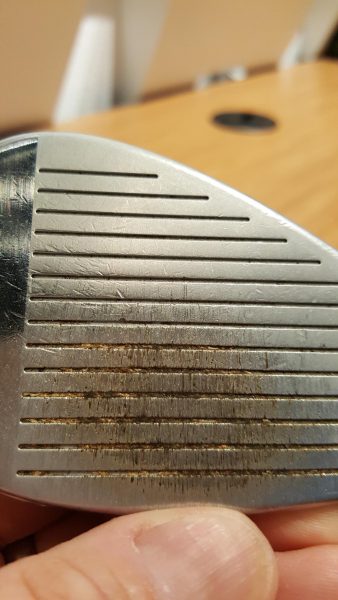
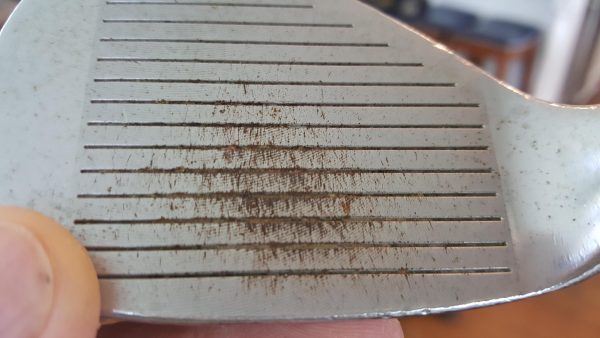


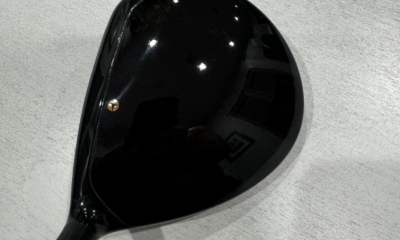



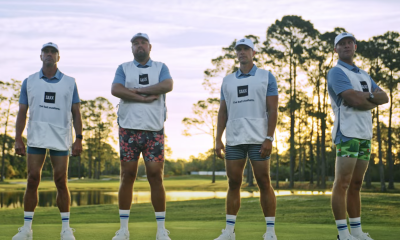



















jamho3
May 10, 2019 at 8:17 am
TK in 2020!
Thanks for the thoughtful post, I can see how difficult it is to get things just right when so many factors are in play. Science, real experience, knowledge of Am’s, Pros playing conditions and so forth.
I appreciate the discernment that goes into your writing with your efforts to help us.
New product by 2019 The Open or we’re going on strike!
Brando
May 8, 2019 at 9:35 pm
I think lie angle is overlooked when it comes to wedges and putters. It’s very important in my opinion. My lob wedge is the flatest club in my bag. I just bent my putter 1 degree flater and putting so much better now and hitting the sweet spot again.
Layne Yawn
May 8, 2019 at 5:48 pm
Terry:
I have a lob wedge with 10* of bounce. All my lob wedges in the past have had about 5*-6* of bounce. Is it possible to shave a small amount off the bounce? Our fairways are extremely tight as well as the chipping areas around the green. I just don’t seem to hit the quality wedge shots like I use to and being 65 doesn’t help. I like the wedge, I like the way it looks and feels. A lower bounce was not an option offered by the manufacturer. What would you suggest?
Thank you
Luke
May 7, 2019 at 4:20 pm
Any opinion on re-grooving with groove tools?
Terry Koehler
May 8, 2019 at 10:40 am
Hello Luke, the main issue with re-grooving wedges is that the process removes material, of course, which will then likely make your grooves exceed USGA specifications, and possibly sharpen the edges too much as well. If you and your golf buddies don’t mind your wedges being non-conforming, I guess it’s not an issue. But you should be aware of this . . .
Tom Newsted
May 7, 2019 at 2:35 pm
So the question in my mind is what is a realistic number of rounds before we look to replace a wedge. Currently I do it once a year but then again I use all three a great deal and I normally get in about 60-70 rounds a year.
Terry Koehler
May 8, 2019 at 10:43 am
Good question, Tom. A major brand is saying that wedges exhibit significant spin loss after 50 rounds, but they are not specific on how many shots that represents. If you practice a lot with them, you might not even get that many.
My suggestion is to get a good magnifier and visually examine the grooves and face texture often, comparing the center impact area to the perimeter of the scored area where you make impact much less often, and make that call yourself. I also recommend that you practice with your older wedges if you replace them, and keep your new ones fresh for actual play.
Chris
May 8, 2019 at 8:15 pm
Wow, as simple as the thought of practicing with an old wedge is, I never thought about it. Thanks.
Revanant
Jul 30, 2019 at 12:58 pm
Hey Terry,
The rule of thumb I’ve heard regarding wedge condition is to run your finger nail down the grooves–as long as you hear a click, you have good grooves.
Is that an over-simplification? Should I be looking for major wear and chipping, kind of like in the photo of the tour pro’s wedge? I feel like that wedge is definitely on the verge of replacement, whereas my wedges don’t yet have wear spots but I’ve put probably about 60 rounds through them and a fair amount of practice. But, most of my wedge usage is chipping, pitching, and half-swings, or bunker play. My 54 degree is only good for 70 yards on a full swing, so most of my gapping on full shots is covered by my Hogan Redline Equalizer through my 9 iron for shots between 80 yards and 110 yards.